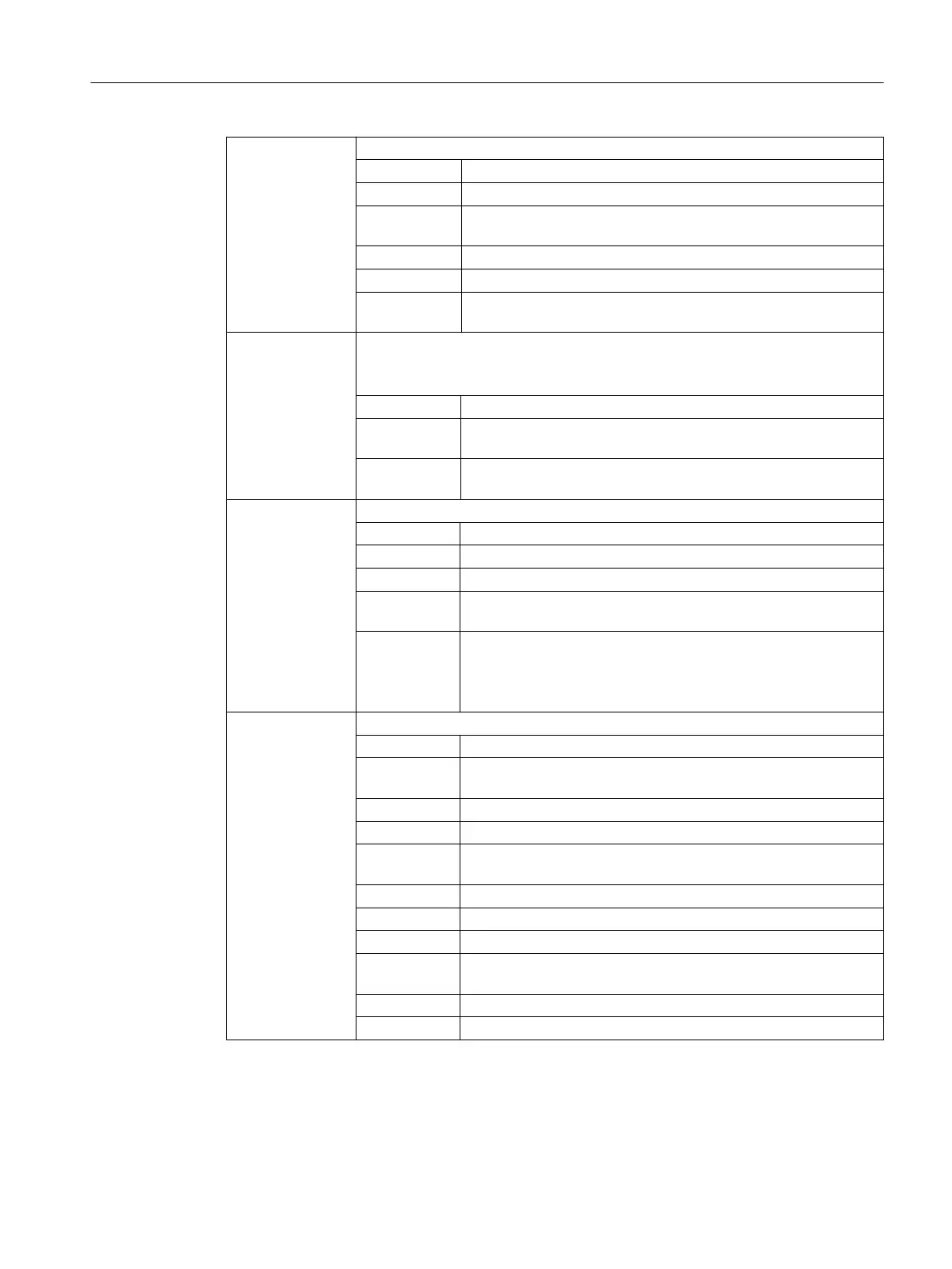<Index1>: Index of the first component to be deleted (optional)
Data type: INT
Default value: -1
Range of val‐
ues:
-1 ≤ x ≤ (maximum number of configured components -1)
Value Meaning
0, 1, 2, .... Index of the component to be deleted.
-1 All components of the specified type are deleted. <Index2> is not
evaluated.
<Index2>: Index of the last components to be deleted (optional)
If <Index2> is not programmed, only the system variables of the component refer‐
enced in <Index1> are deleted.
Data type: INT
Default value: Only the system variables of the component referenced in <In‐
dex1> are deleted.
Range of val‐
ues:
<Index1> < x ≤ (max. number of configured components -1)
<NoAlarm>: Alarm suppression (optional)
Data type: BOOL
Default value: FALSE
Value Meaning
FALSE In the event of an error (<RetVal> < 0), program processing is
stopped and an alarm displayed.
TRUE In the event of an error, the program processing is not stopped and
no alarm displayed.
Application: User-specific reaction corresponding to the return
value
<RetVal>: Function return value
Data type: INT
Range of val‐
ues:
0, -1, -2, ... -7
Value Meaning
0 No error occurred.
-1 Call of the function without parameters. At least parameter
<CompType> must be specified.
-2 <CompType> identifies an unknown component
-3 <Index1> is less than -1
-4 <Index1> is greater than the configured number of components
-5 <Index1> has a value not equal to -1 when deleting a compo‐
nent group
-6 <Index2> is less than <Index1>
-7 <Index2> is greater than the configured number of components
Work preparation
3.10 Kinematic chains
NC programming
Programming Manual, 12/2019, 6FC5398-2EP40-0BA0 723

